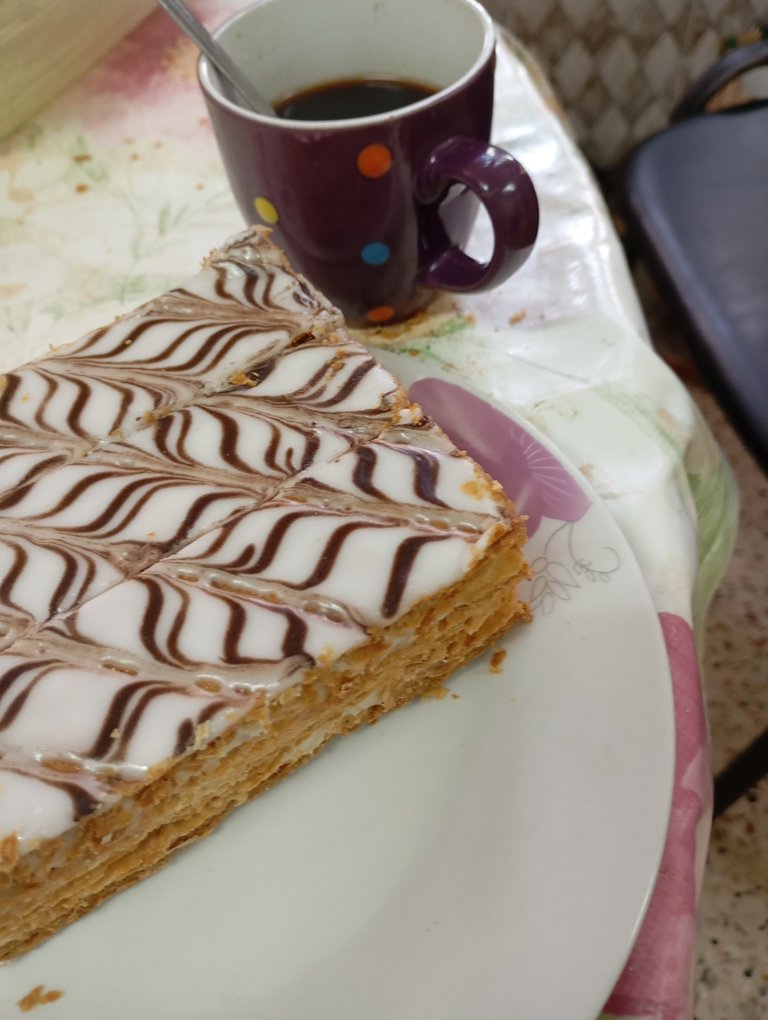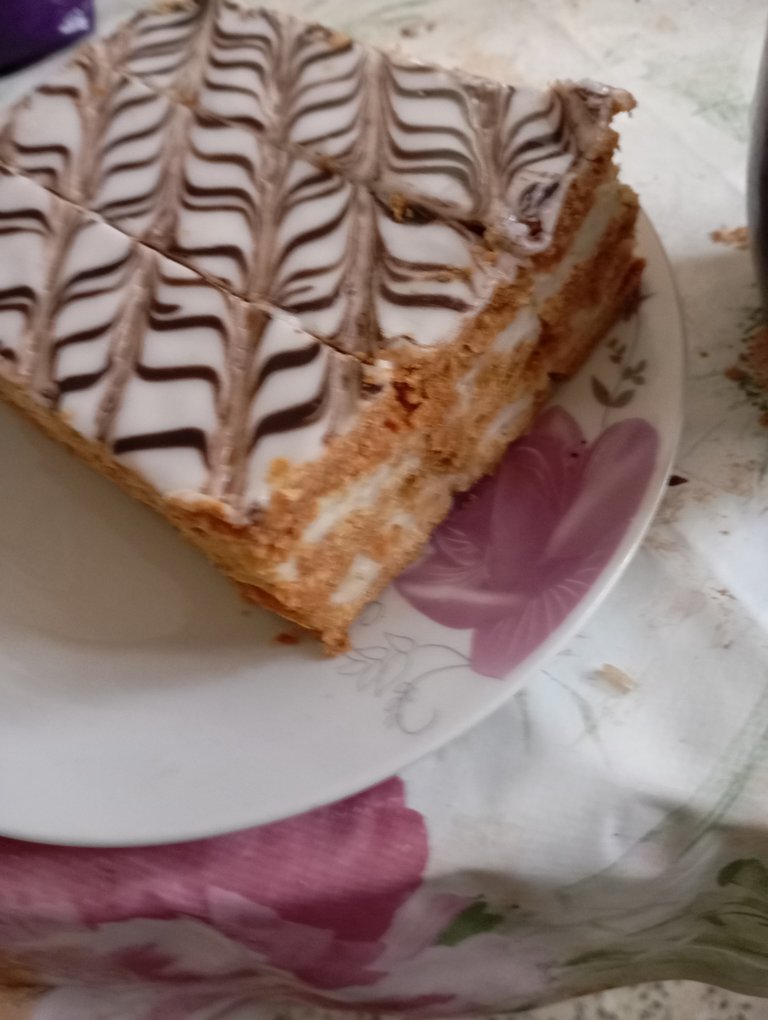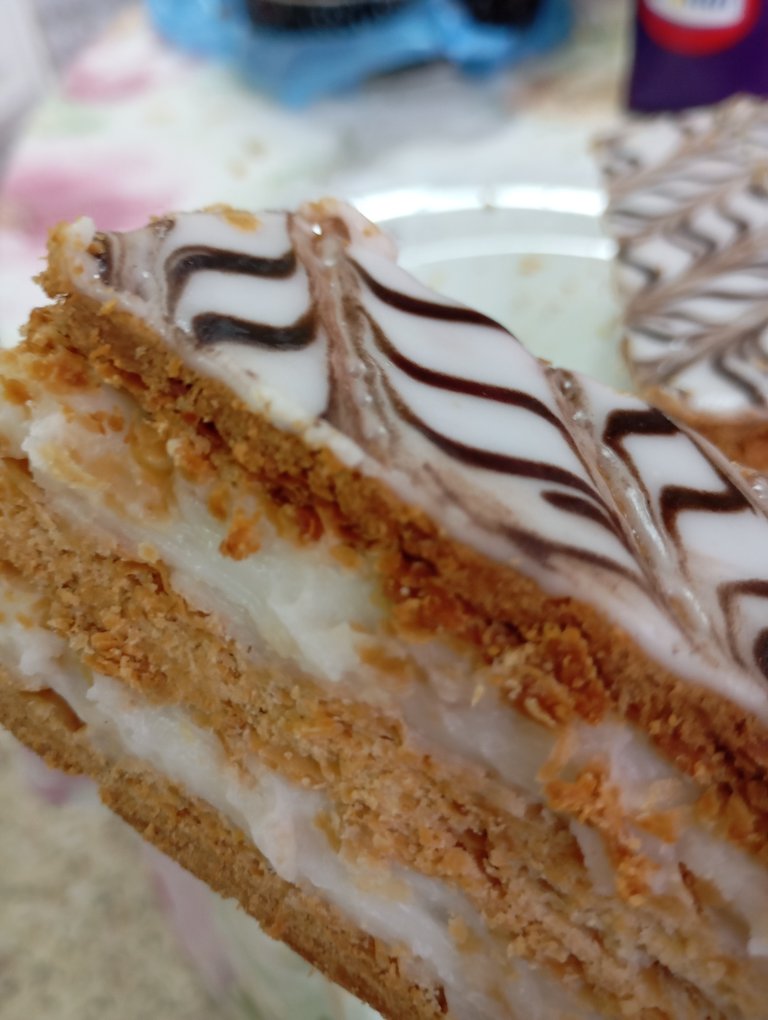Breakfast/ Petit déjeuner



A coffee with a mille-feuille is perfect for a morning breakfast. The mille-feuille is a pastry that was passed down to us by the French, and here, it is still made by our pastry chefs. I’m not sure if the French still eat it, because they’ve invented so many new cakes since then, and I’m not sure it’s still as popular there.
I think the existence of this cake dates back a long time. A quick Google search led me to this:
The first recipe for a cake similar to the mille-feuille dates back to the 17th century, in one of the works of the French chef François-Pierre de la Varenne (1618 - 1678). The cake became very popular in 1867.
I don’t know why they called it “mille-feuille,” probably because of its many layers of puff pastry.
This is confirmed by Google, but look at what’s mentioned:
The name of this pastry comes from its structure: three layers and a large number of pastry sheets between each layer of cream. Contrary to what the name suggests, there aren’t a thousand layers, but 729, to be precise.
For me, 729 layers is huge; there’s not much missing to reach 1000. Imagine if they had called this cake “729.” When speaking to a seller or a pastry chef, you’d say, “Please, give me a 729.” It sounds good, right? Maybe they should have chosen that number. Anyway, it’s a decision that was made at some point and has stuck.
The most important thing now is that I’m enjoying it.
///
Un café avec un mille-feuilles, c'est idéal pour un petit déjeuner matinal. Le mille-feuilles est un gâteau qui nous a été légué par les Français, et ici, il est toujours confectionné par nos pâtissiers. Je ne sais pas si les Français le consomment encore, car ils ont tellement inventé de nouveaux gâteaux depuis, je ne suis pas sûr qu'il soit encore aussi populaire chez eux.
Je pense que l'existence de ce gâteau remonte à longtemps. Une petite recherche sur Google m'a permis de trouver ceci :
La première recette d'un gâteau similaire au mille-feuille remonte au 17e siècle, dans l'un des ouvrages du cuisinier français François-Pierre de la Varenne (1618 - 1678). Le gâteau a connu un grand succès en 1867.
Je ne sais pas pourquoi on l'a appelé "mille-feuilles", sûrement à cause de ses nombreuses couches de pâte feuilletée.
C'est confirmé par Google, mais regardez ce qui est mentionné :
Le nom de cette pâtisserie provient de sa structure : trois étages et un grand nombre de feuillets de pâte entre chaque couche de crème. Contrairement à ce que le nom laisse entendre, il n'y en a pas mille, mais 729, très précisément.
Pour moi, 729 feuillets, c'est énorme ; il ne manque pas grand-chose pour atteindre 1000. Imaginez qu'on ait appelé ce gâteau "729". En s'adressant à un vendeur ou à un pâtissier, on dirait : « S'il vous plaît, donnez-moi un 729. » Ça sonne bien, non ? Peut-être qu'ils auraient dû choisir ce chiffre. Enfin, c'est une décision qui a été prise à un moment donné et qui est restée.
Le plus important, maintenant, c'est que moi, je me régale.

!HUG
Your post has been manually reviewed for curation by the Principality of Bastion.
Check the Trail of posts we voted
Principality of Bastion - Our Leit Motiv? Let's Grow Together.
Principality's site | Minava NFT Market | Discord | Our Twitch Channel
You may TRAIL this account if you like the curation we do, or join our discord to know more about what we do.
